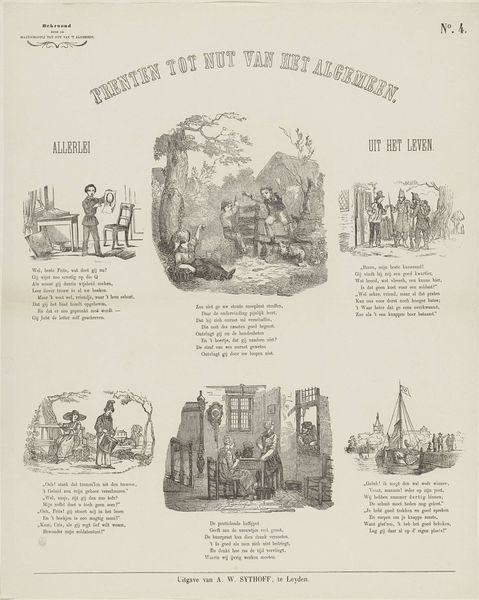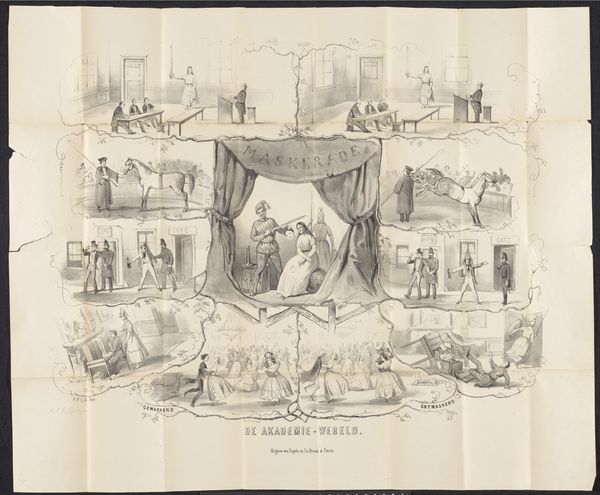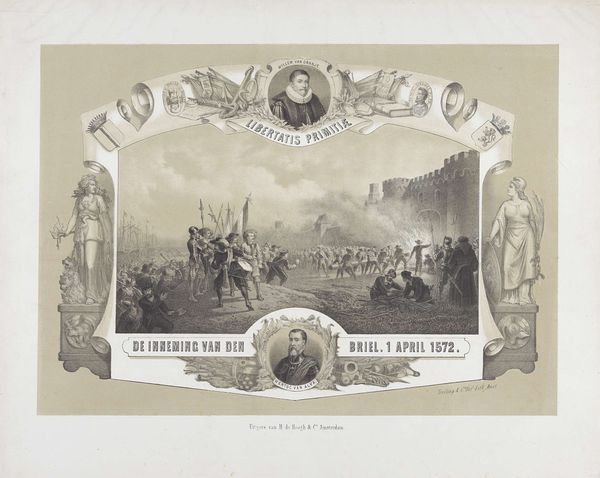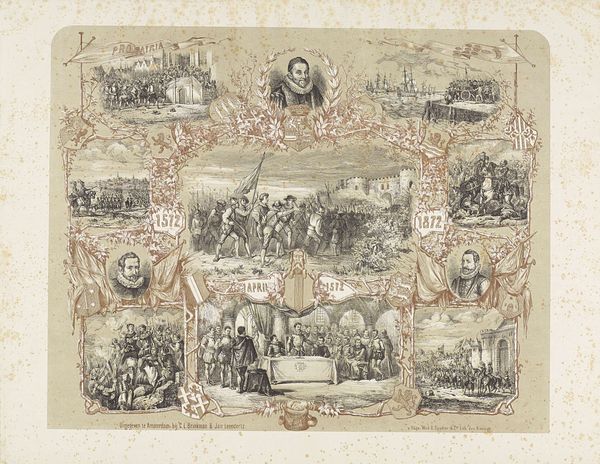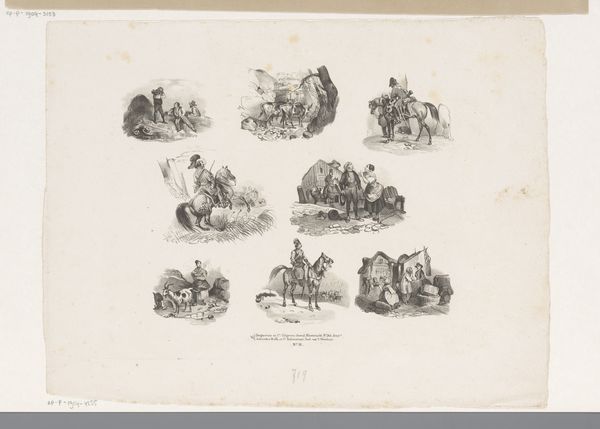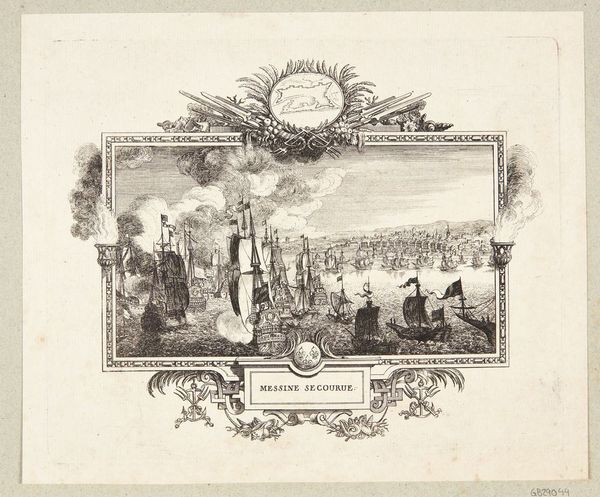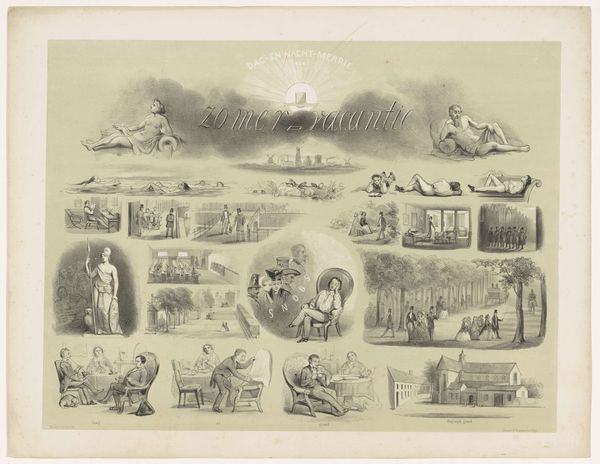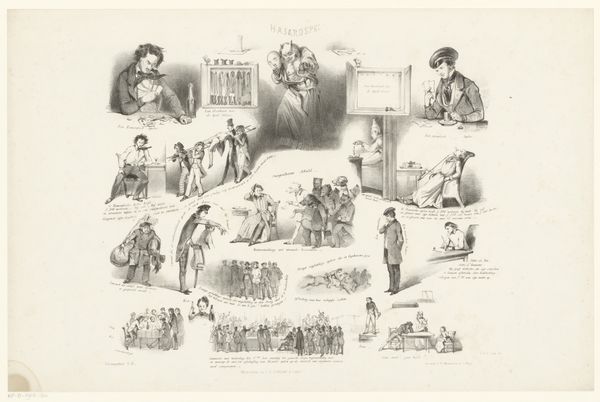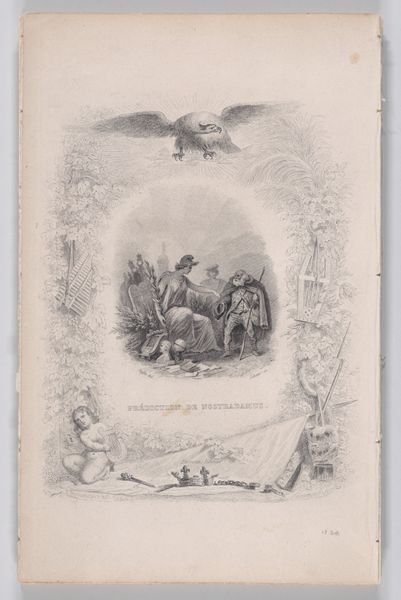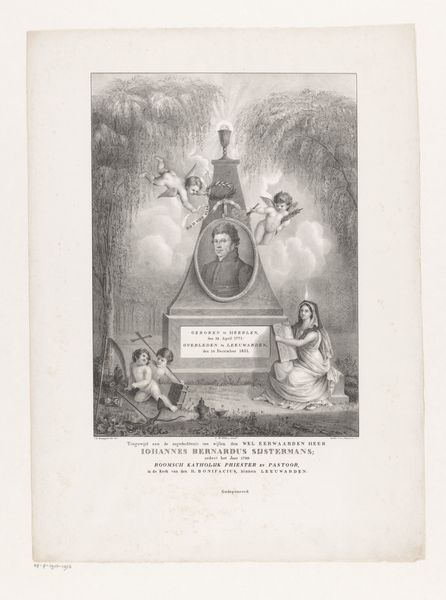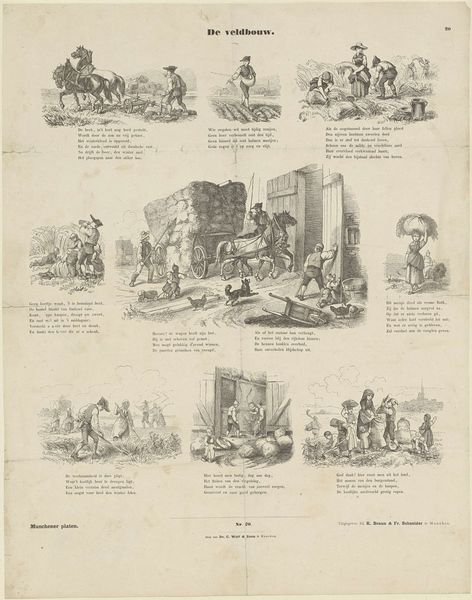
Hulde van Herinnering aan Nederlandschen Moed / Bijzetting der Stoffelijke Overblijfsels van de op den Vijfhoek gesneuveld acht Officieren. Citadel van Antwerpen 1-23 December 1832 / Kerkhof te Ginneken 22 Augustus 1871 1871
0:00
0:00
anonymous
Rijksmuseum
Dimensions: height 443 mm, width 611 mm
Copyright: Rijks Museum: Open Domain
Editor: This print, "Hulde van Herinnering aan Nederlandschen Moed," which translates to "Tribute in Memory of Dutch Courage," was created in 1871, and it's anonymous. It appears to be a graphite and engraving piece commemorating an event from 1832. It has such a formal and somewhat mournful tone. I'm struck by how it mixes realistic depictions with symbolic figures. What's your read on this piece? Curator: What I find fascinating is how this print, created almost forty years after the events it depicts, attempts to shape public memory and national identity. Consider the specific historical context: it commemorates Dutch officers who died in 1832 during the Siege of Antwerp, part of the Belgian Revolution. What political narratives do you think the artist is trying to construct or reinforce by revisiting this event so many years later? Editor: I guess it's about Dutch national pride, but there's also this implicit acknowledgment of loss. The combination feels…complicated. You know, this image was made nearly 40 years after the siege, a long time. Would that imply that the need to assert Dutch courage at that time indicates some other event might be in question at that point in history? Curator: Precisely. After the Franco-Prussian War (1870-71), anxieties arose regarding Dutch neutrality and potential threats. Memorializing past heroism served to solidify a sense of national unity and military strength in the face of perceived vulnerability. How do you interpret the symbolism in the print—the lion, the allegorical female figure, and the placement of military equipment? Editor: It's a bit heavy-handed, right? The lion representing strength, the female figure as a symbol of… the fatherland perhaps? And the weaponry underscores the military aspect. But seeing it in relation to post-Franco Prussian war context is thought-provoking; it helps unpack why the piece might have been made when it was. Curator: Indeed. By examining the socio-political landscape, we gain a richer understanding of how art is not created in a vacuum but actively participates in shaping cultural narratives and reinforcing societal values. Editor: Absolutely, I see the way history painting blends factual details and broader ideas about identity and a specific society. Thanks!
Comments
No comments
Be the first to comment and join the conversation on the ultimate creative platform.
